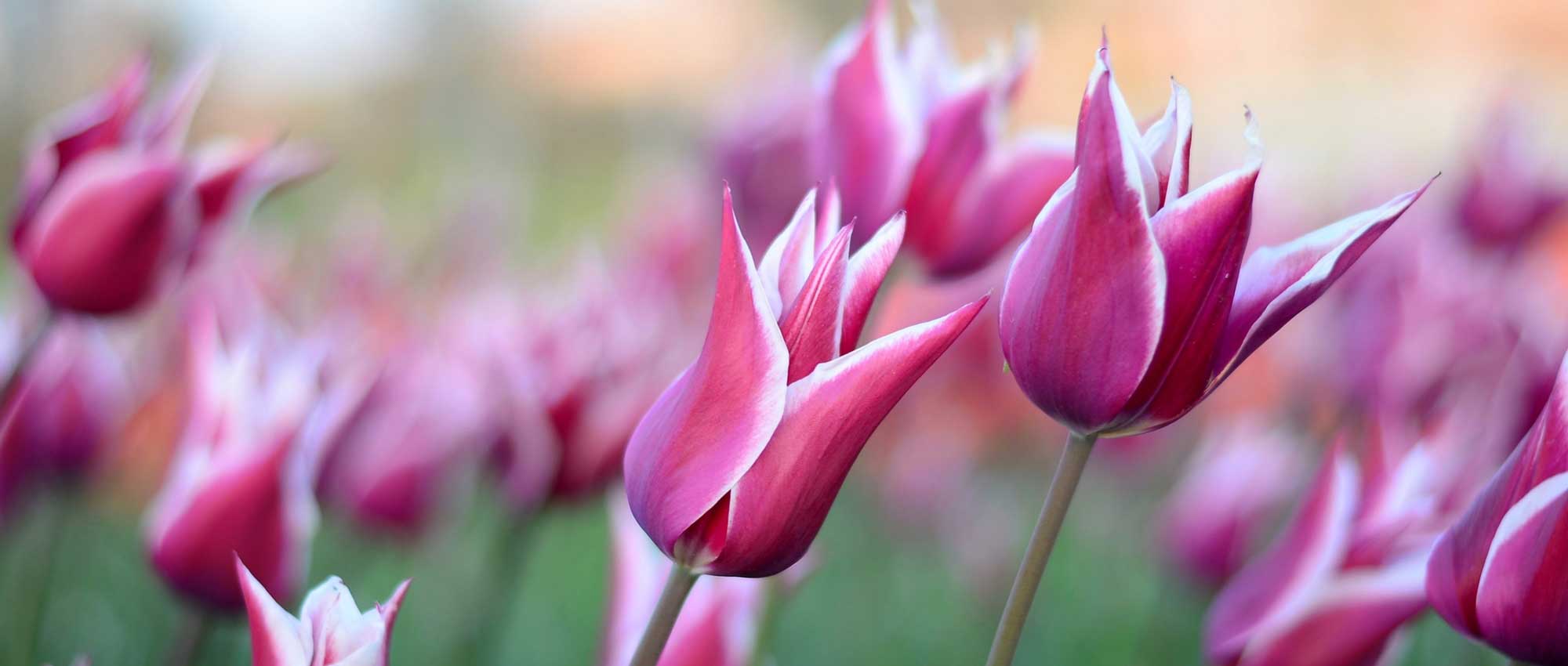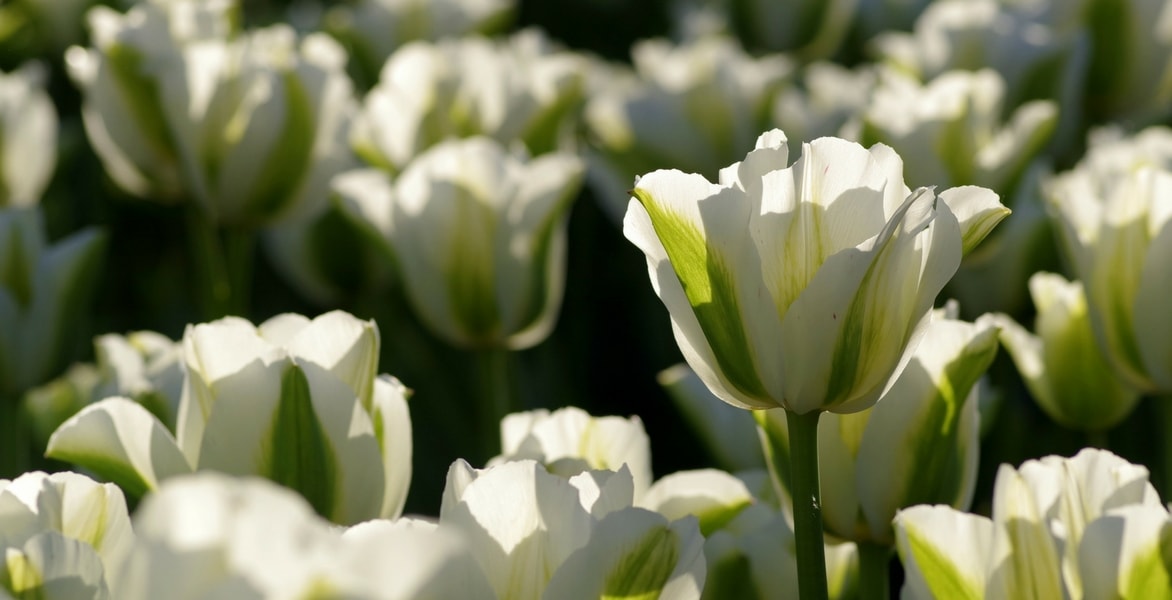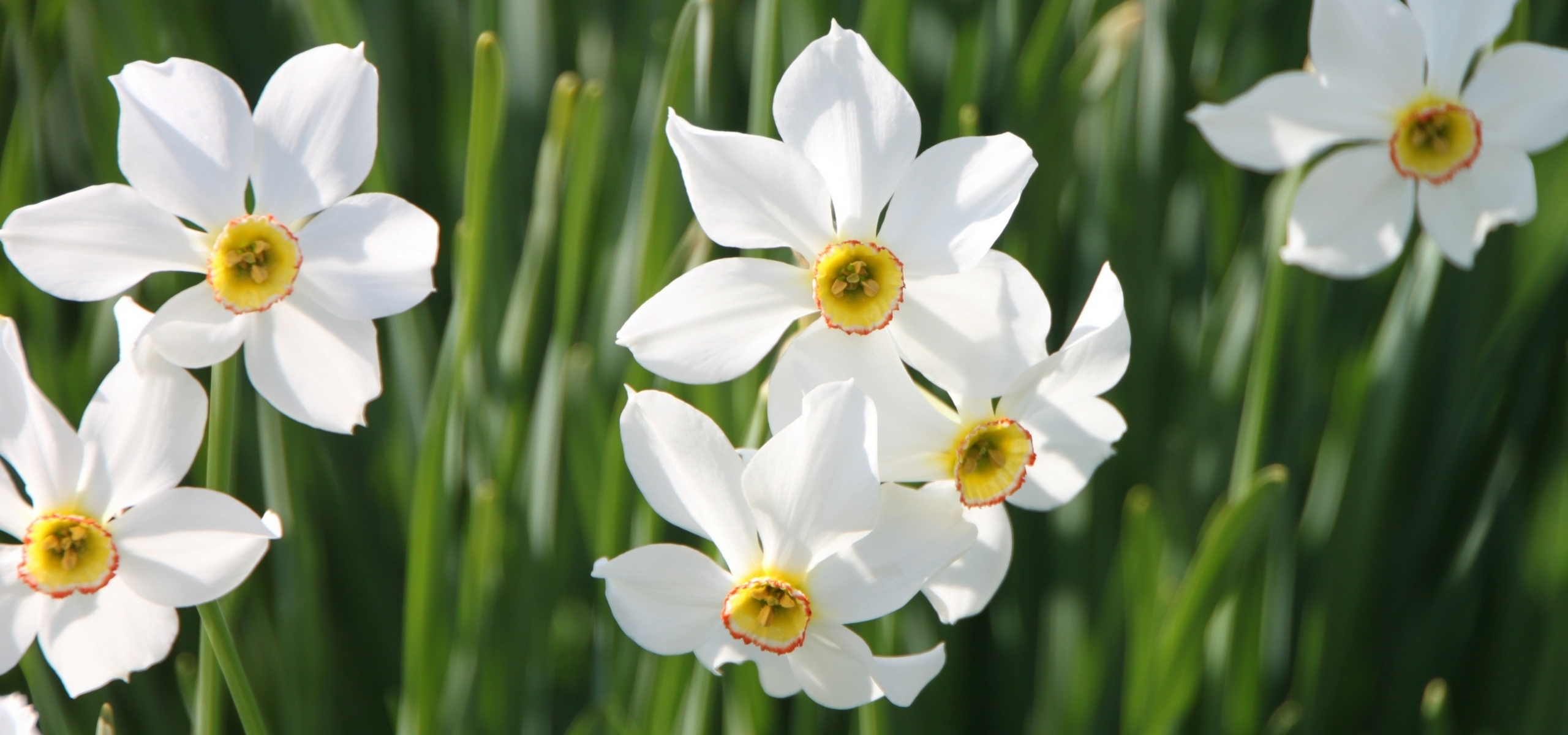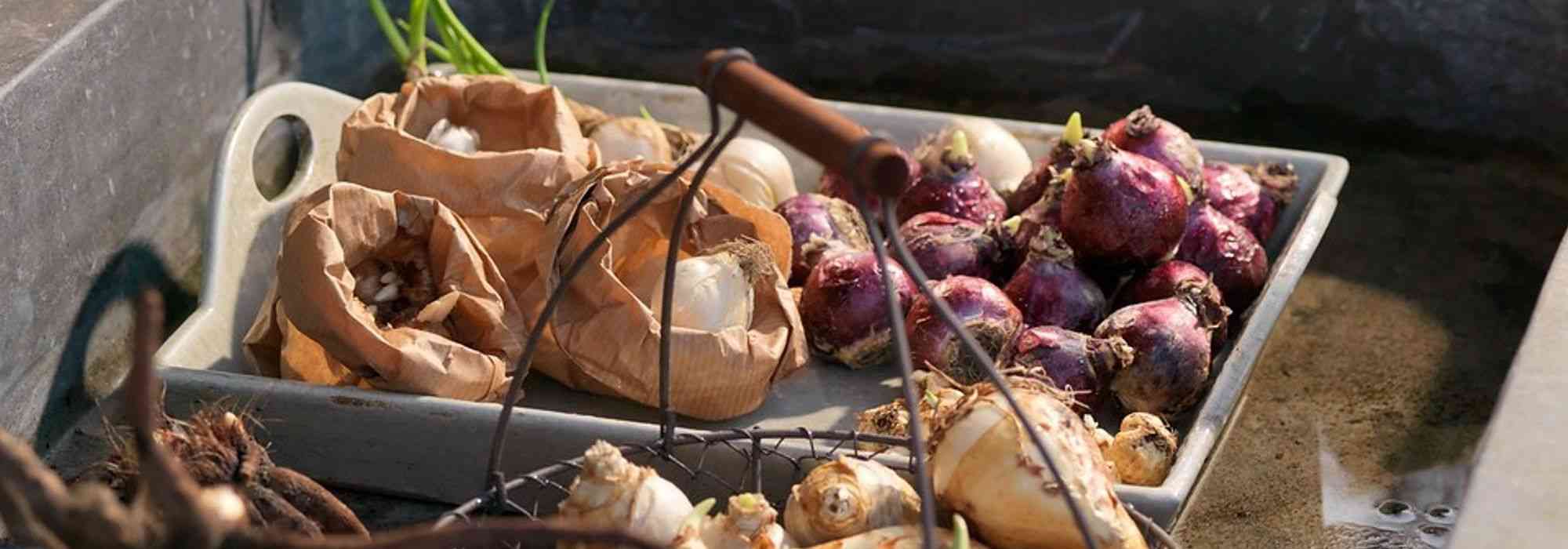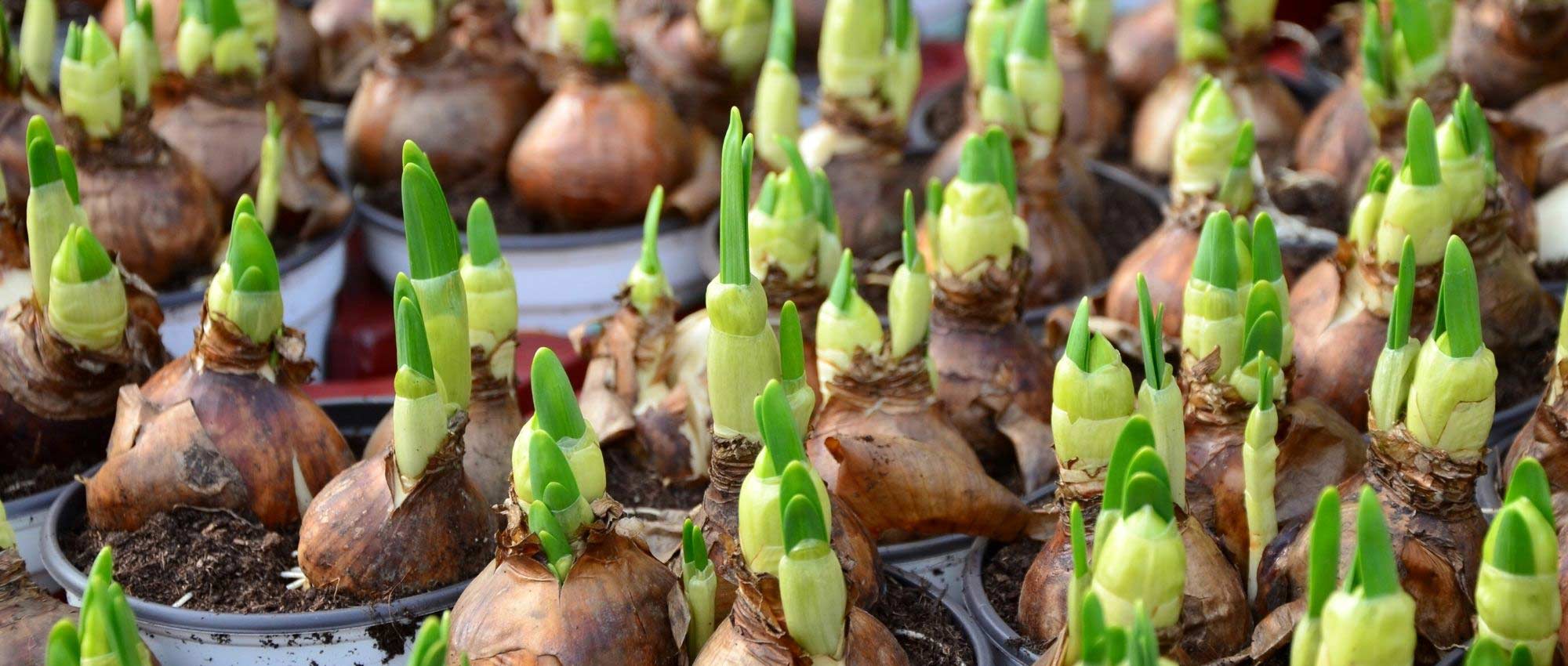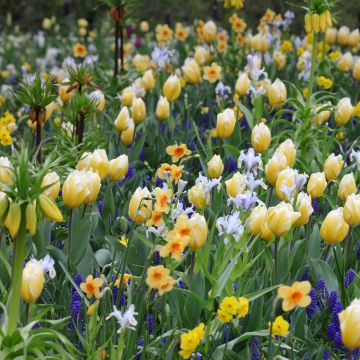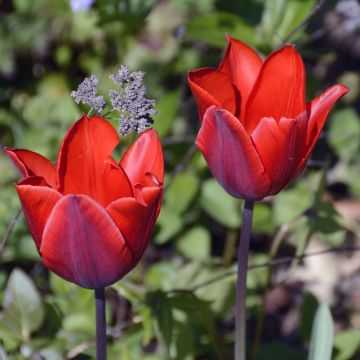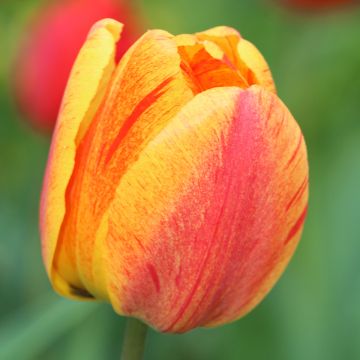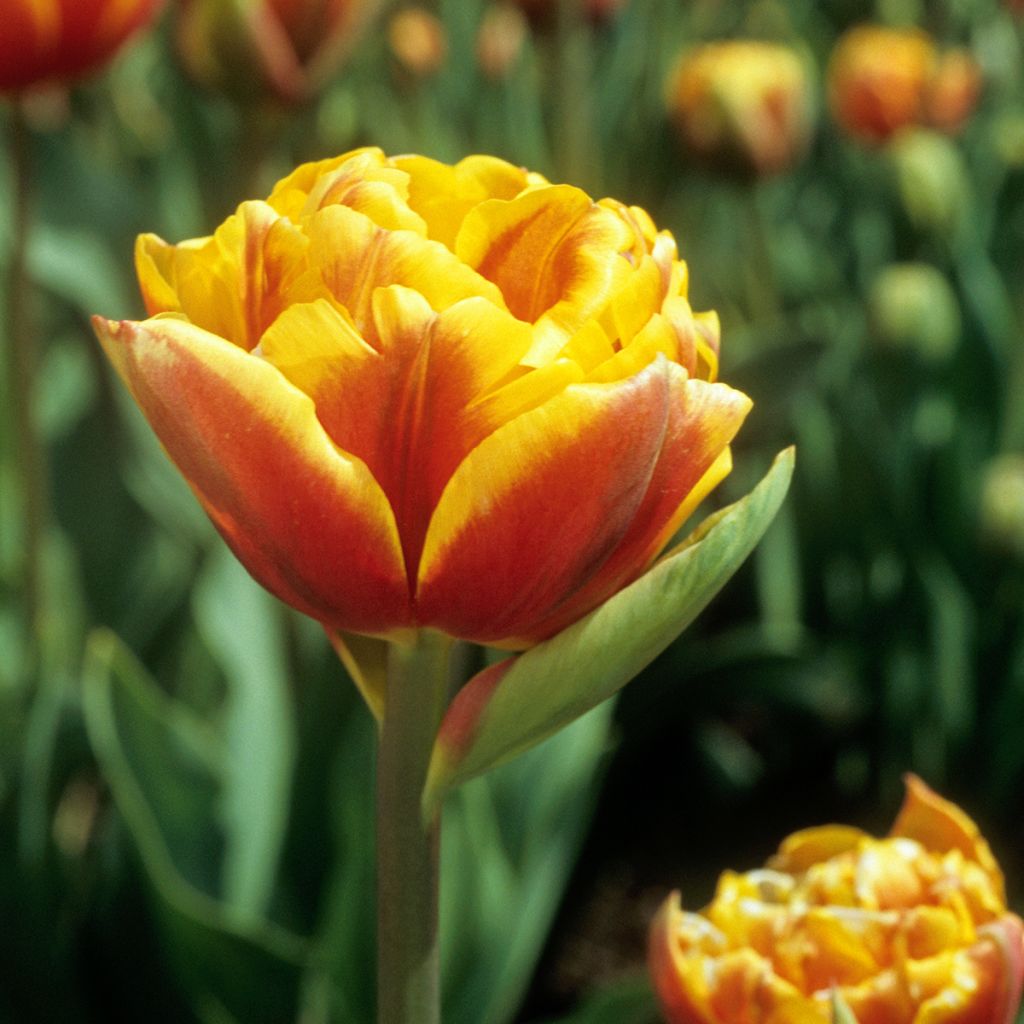

Tulipa Bonanza - Tulipe Bonanza, Tulipe Pivoine Bonanza
Tulipa Bonanza - Double late Tulip
Tulipa Bonanza
Double late Tulip
Special offer!
Receive a €20 voucher for any order over €90 (excluding delivery costs, credit notes, and plastic-free options)!
1- Add your favorite plants to your cart.
2- Once you have reached €90, confirm your order (you can even choose the delivery date!).
3- As soon as your order is shipped, you will receive an email containing your voucher code, valid for 3 months (90 days).
Your voucher is unique and can only be used once, for any order with a minimum value of €20, excluding delivery costs.
Can be combined with other current offers, non-divisible and non-refundable.
Home or relay delivery (depending on size and destination)
Schedule delivery date,
and select date in basket
This plant carries a 6 months recovery warranty
More information
We guarantee the quality of our plants for a full growing cycle, and will replace at our expense any plant that fails to recover under normal climatic and planting conditions.
Would this plant suit my garden?
Set up your Plantfit profile →
Description
The Double Late Tulip 'Bonanza' is a spectacular variety that captivates with its opulent flowering in late spring, blending vibrant red with a golden yellow edge in a dense form reminiscent of peonies. With a compact and structured habit, it forms harmonious clumps ideal for borders, flower beds, and containers. Its late flowering in April-May makes it a perfect ally for extending spring colours. Very hardy, it simply requires well-drained soil and a sunny position to deliver its full decorative potential, while avoiding overly damp or shaded areas that could compromise the health of its bulbs.
The Bonanza Tulip belongs to the Liliaceae family, classified among double late or peony-flowered tulips. It differs from the typical Byzantine species of Central Asia by its striking double flowers which are larger and longer-lasting. Its growth is rapid: the plant reaches approximately 45 cm in open ground, with a clump width of around 15 cm, and adapts very well to 20 cm diameter pots, maintaining a compact and dense habit. Each bulb develops a single permanent stem. Reminiscent of peonies, the double flowers measure approximately 8 to 10 cm in diameter; their overlapping petals form a dense cup of bright red with a contrasting yellow edge at the base. Flowering occurs from April to May. The foliage is deciduous, formed of 4 to 6 lanceolate dark green leaves 3–5 cm wide which naturally fade after flowering. The sturdy stems ensure good stability, even in windy conditions. The root system consists of a fleshy bulb 11–12 cm in circumference, extended by fibrous roots 15–20 cm deep, requiring fertile, cool, and particularly well-drained soil. A true star of spring displays, the 'Bonanza' has been noted in the Netherlands and England for its spectacular visual effect and its versatility as a cut and ornamental tulip. It takes its name from its generous and rich flowering, confirming a sense of spectacle worthy of its name.
In a well-structured garden or a large, well-differentiated container, the Bonanza tulip offers a theatrical display. Its red robe edged with gold captures the evening light and stands out magnificently against silver foliage or low-growing plants like lady's mantle or Siberian bugloss. It is best placed in groups to accentuate its peony-like effec,t or mixed with tulips like the 'Pirand' for intensity, 'Yellow Pomponette' for a golden echo, and 'Orange Princess' to create a measured, flamboyant display.
Tulipa Bonanza - Double late Tulip in pictures
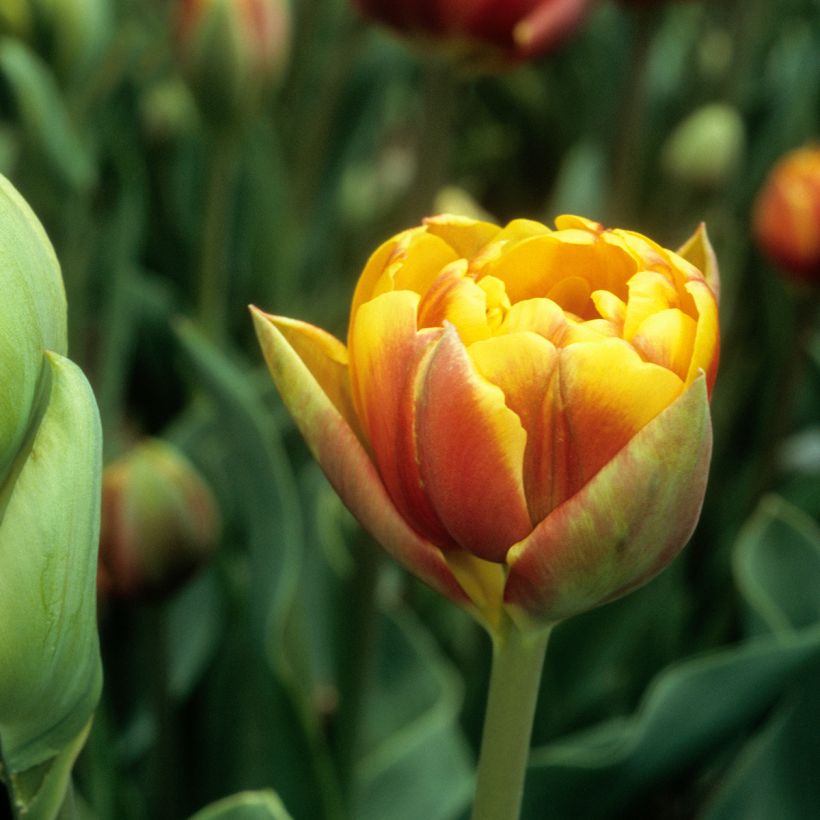

Plant habit
Flowering
Foliage
Botanical data
Tulipa
Bonanza
Liliaceae
Double late Tulip
Tulipa Bonanza
Cultivar or hybrid
Planting and care
How to plant my tulips? Plant your double late Bonanza tulips as soon as possible in well-drained soil. Loosen the soil deeply. Plant at a depth of 15 cm (bulbs should be covered by twice their height of soil). Space the bulbs a few centimetres apart, ensuring they do not touch. Choose a sunny location for better flowering. After flowering, cut the flower stalks and allow the leaves to dry out completely before cutting them back. Tulips prefer contrasting climates, with cold winters and hot, dry summers. After flowering, their foliage becomes faded and unsightly; we recommend planting Heucheras, Tiarellas, Brunneras, Bleeding Hearts, Cypress Spurge in the foreground of your beds, their foliage will enhance the colours of your tulips and as the season progresses, they will elegantly conceal their yellowed leaves.
Planting period
Intended location
Care
Planting & care advice
This item has not been reviewed yet - be the first to leave a review about it.
Similar products
Haven't found what you were looking for?
Hardiness is the lowest winter temperature a plant can endure without suffering serious damage or even dying. However, hardiness is affected by location (a sheltered area, such as a patio), protection (winter cover) and soil type (hardiness is improved by well-drained soil).

Photo Sharing Terms & Conditions
In order to encourage gardeners to interact and share their experiences, Promesse de fleurs offers various media enabling content to be uploaded onto its Site - in particular via the ‘Photo sharing’ module.
The User agrees to refrain from:
- Posting any content that is illegal, prejudicial, insulting, racist, inciteful to hatred, revisionist, contrary to public decency, that infringes on privacy or on the privacy rights of third parties, in particular the publicity rights of persons and goods, intellectual property rights, or the right to privacy.
- Submitting content on behalf of a third party;
- Impersonate the identity of a third party and/or publish any personal information about a third party;
In general, the User undertakes to refrain from any unethical behaviour.
All Content (in particular text, comments, files, images, photos, videos, creative works, etc.), which may be subject to property or intellectual property rights, image or other private rights, shall remain the property of the User, subject to the limited rights granted by the terms of the licence granted by Promesse de fleurs as stated below. Users are at liberty to publish or not to publish such Content on the Site, notably via the ‘Photo Sharing’ facility, and accept that this Content shall be made public and freely accessible, notably on the Internet.
Users further acknowledge, undertake to have ,and guarantee that they hold all necessary rights and permissions to publish such material on the Site, in particular with regard to the legislation in force pertaining to any privacy, property, intellectual property, image, or contractual rights, or rights of any other nature. By publishing such Content on the Site, Users acknowledge accepting full liability as publishers of the Content within the meaning of the law, and grant Promesse de fleurs, free of charge, an inclusive, worldwide licence for the said Content for the entire duration of its publication, including all reproduction, representation, up/downloading, displaying, performing, transmission, and storage rights.
Users also grant permission for their name to be linked to the Content and accept that this link may not always be made available.
By engaging in posting material, Users consent to their Content becoming automatically accessible on the Internet, in particular on other sites and/or blogs and/or web pages of the Promesse de fleurs site, including in particular social pages and the Promesse de fleurs catalogue.
Users may secure the removal of entrusted content free of charge by issuing a simple request via our contact form.
The flowering period indicated on our website applies to countries and regions located in USDA zone 8 (France, the United Kingdom, Ireland, the Netherlands, etc.)
It will vary according to where you live:
- In zones 9 to 10 (Italy, Spain, Greece, etc.), flowering will occur about 2 to 4 weeks earlier.
- In zones 6 to 7 (Germany, Poland, Slovenia, and lower mountainous regions), flowering will be delayed by 2 to 3 weeks.
- In zone 5 (Central Europe, Scandinavia), blooming will be delayed by 3 to 5 weeks.
In temperate climates, pruning of spring-flowering shrubs (forsythia, spireas, etc.) should be done just after flowering.
Pruning of summer-flowering shrubs (Indian Lilac, Perovskia, etc.) can be done in winter or spring.
In cold regions as well as with frost-sensitive plants, avoid pruning too early when severe frosts may still occur.
The planting period indicated on our website applies to countries and regions located in USDA zone 8 (France, United Kingdom, Ireland, Netherlands).
It will vary according to where you live:
- In Mediterranean zones (Marseille, Madrid, Milan, etc.), autumn and winter are the best planting periods.
- In continental zones (Strasbourg, Munich, Vienna, etc.), delay planting by 2 to 3 weeks in spring and bring it forward by 2 to 4 weeks in autumn.
- In mountainous regions (the Alps, Pyrenees, Carpathians, etc.), it is best to plant in late spring (May-June) or late summer (August-September).
The harvesting period indicated on our website applies to countries and regions in USDA zone 8 (France, England, Ireland, the Netherlands).
In colder areas (Scandinavia, Poland, Austria...) fruit and vegetable harvests are likely to be delayed by 3-4 weeks.
In warmer areas (Italy, Spain, Greece, etc.), harvesting will probably take place earlier, depending on weather conditions.
The sowing periods indicated on our website apply to countries and regions within USDA Zone 8 (France, UK, Ireland, Netherlands).
In colder areas (Scandinavia, Poland, Austria...), delay any outdoor sowing by 3-4 weeks, or sow under glass.
In warmer climes (Italy, Spain, Greece, etc.), bring outdoor sowing forward by a few weeks.


































